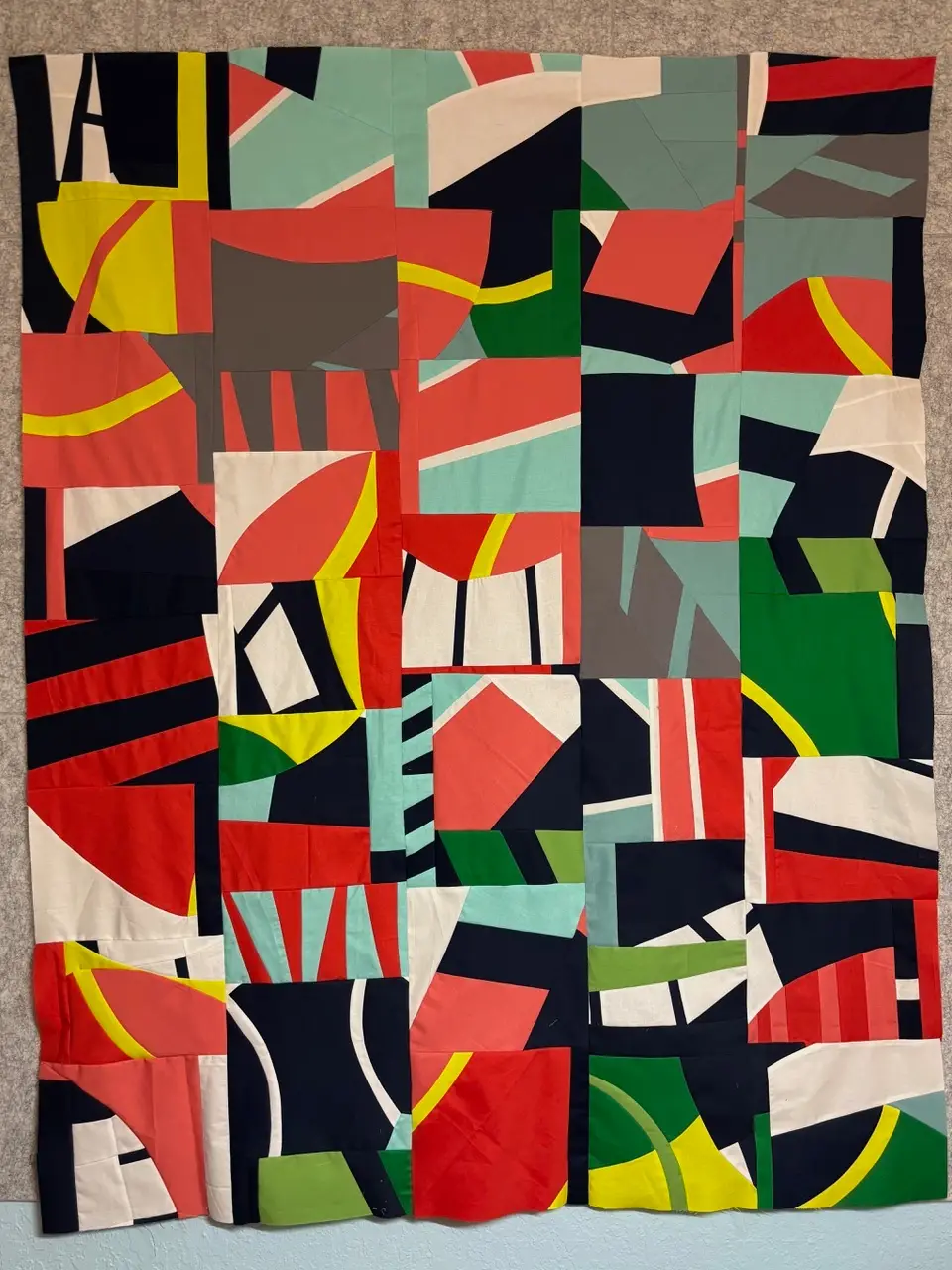When Ethylene Ziegler first picked up sewing, it was simply to make pajamas for her kids. Those leftover fabric scraps sparked something much bigger. Now an award-winning modern quilter, Ethylene blends improv techniques, bold color, and a love of learning into every project.
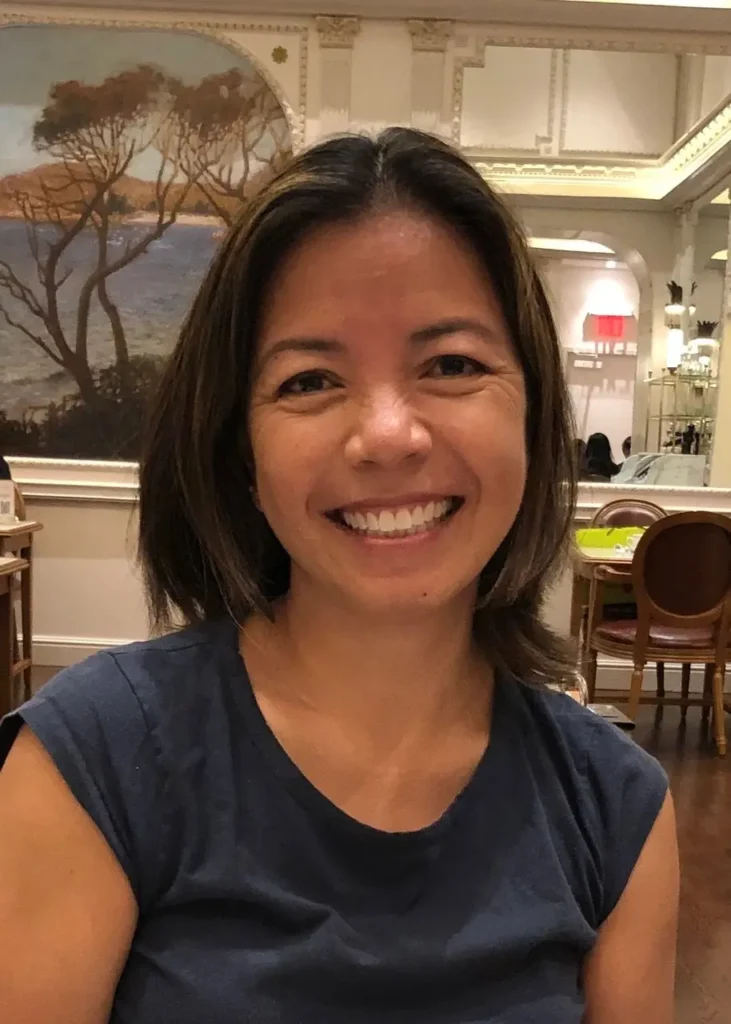
How did you first discover quilting and textile art?
I grew up with a mother who was an amazing seamstress, but she never taught me how to sew. (I also probably never asked her to teach me.) When she passed away, I inherited a couple of her sewing machines that remained unused for several years.
I took my first sewing lesson when my best friend and I signed up to take classes at a local art center. I made a tote bag and pajamas for my kids. I was left with the scraps from those projects.
As the child of immigrants, I was raised with a scarcity mentality and a propensity for saving all things that can be repurposed or reused. I discovered quilting in my efforts to use up all those scraps.
As an Amazon Associate I earn from qualifying purchases. Read more about our affiliate linking policy.
Who or what inspires your quilting style and designs?
I started as more of a traditional quilter. Since I found modern quilting, I’ve been inspired by the improv work of Sherri Lynn Wood, Rosie Lee Tompkins, and the Gee’s Bend Quilters. Tara Faughnan is a wiz with color and value. And many of my fellow Los Angeles Modern Quilt Guild members inspire me as well.
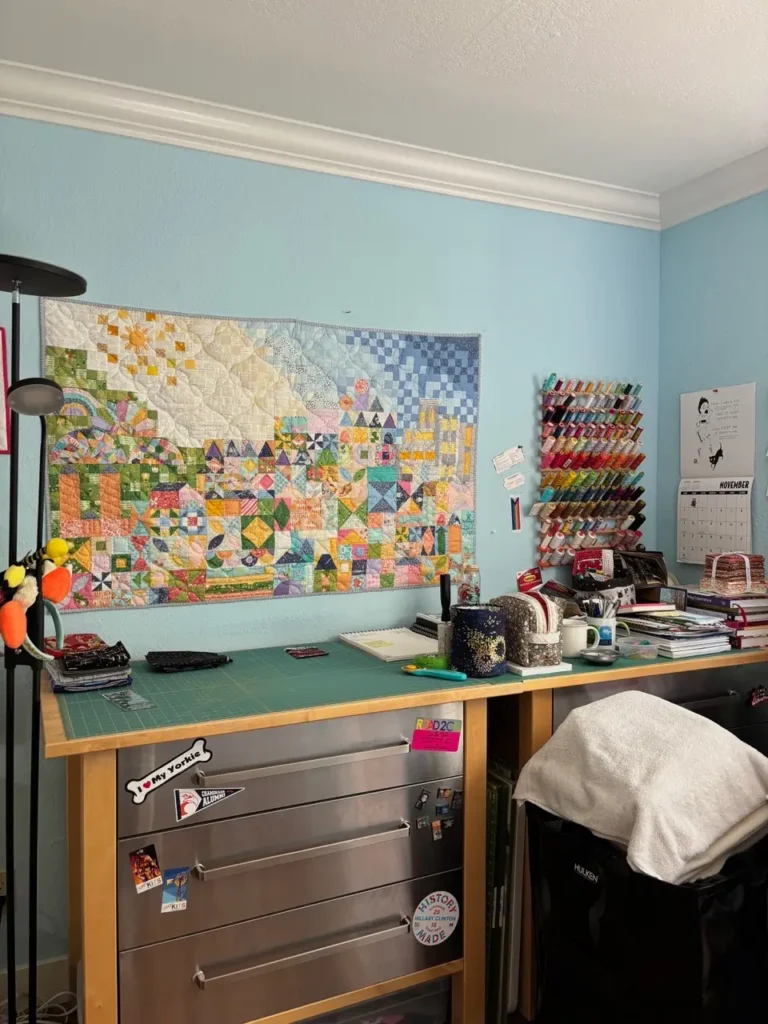
What does your workspace look like?
I’m lucky enough to have a designated sewing space. I must confess that my quilting activities have expanded beyond that space.
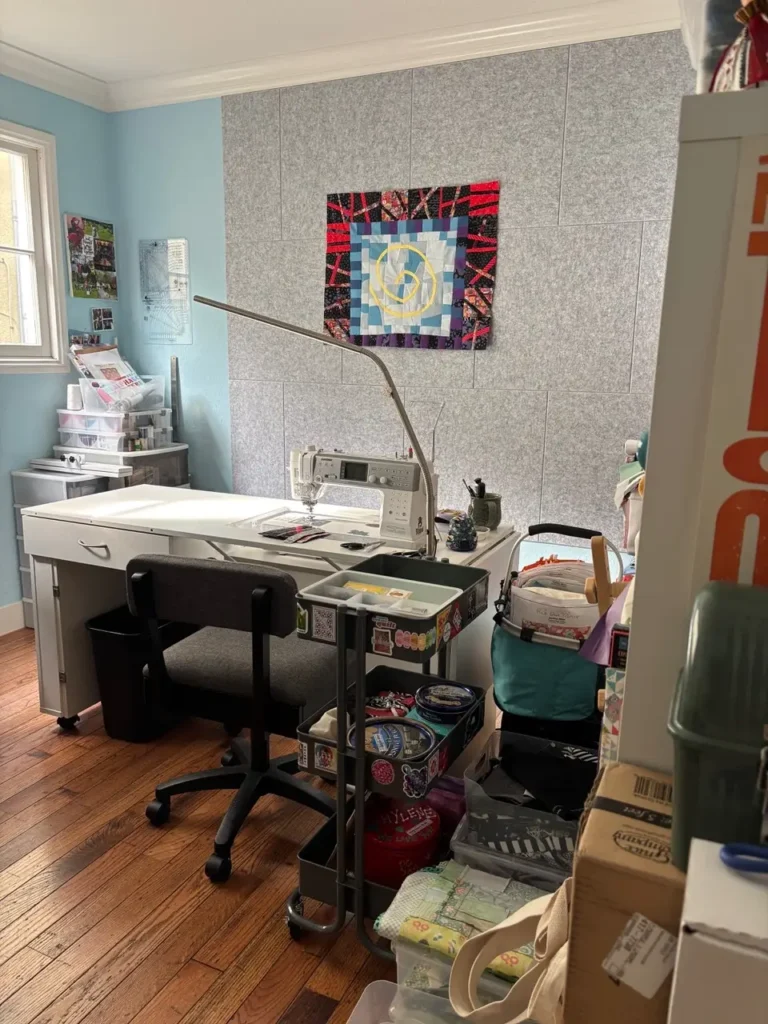
Inside my sewing room, I’ve got a sewing table with leaves that come out to accommodate quilting on my domestic machine. I’ve got a great cutting table that’s over six feet long (though half that space is usually covered with piles of books or projects). Below the cutting surface is storage for tools/notions/implements and for my fabric scraps.
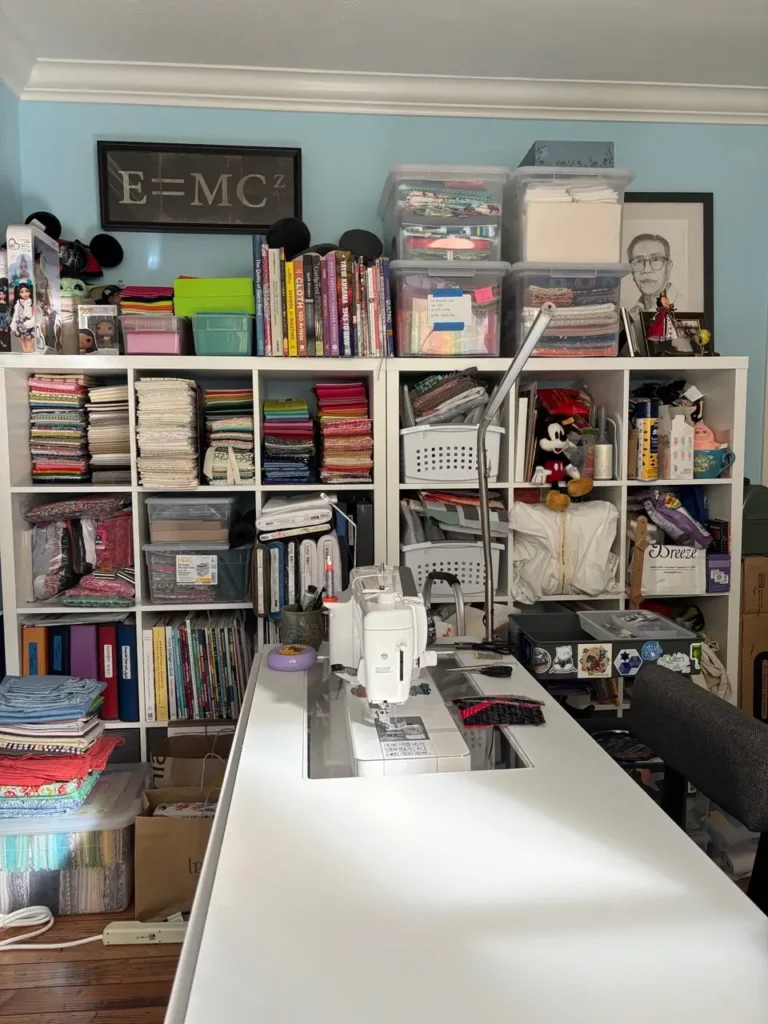
And I’ve got a wall of bookcases for storing fabric, quilting books, and works in progress. My ironing board lives outside my sewing room, along with an extra sewing machine and even more quilting books.
What tools or materials could you not live without?
My design wall is fantastic for putting up blocks and making composition decisions. I have several different thimbles for use with hand quilting and hand piecing. And I definitely couldn’t live without my scissors, my rotary cutters and my seam ripper.
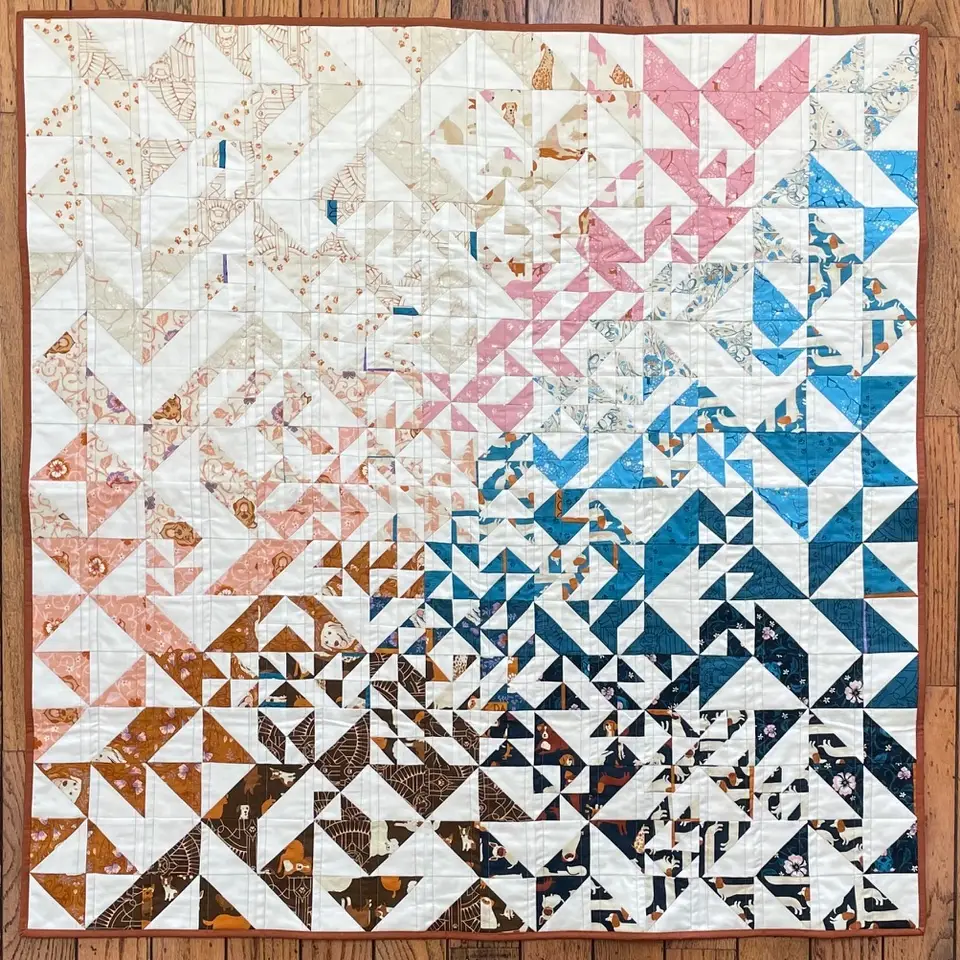
Tell us more about your fabric stash. Organized and tidy? Or just enough to find things?
My fabric stash is organized enough, separating solids from prints and one-yard or larger cuts from half-yard cuts, fat quarters, and scraps. Various fabric collections are still kept together with the intention of cutting into them one day.

Scraps. Saver? Or be done with them?
I’m a recovering scrap saver. I’ve made dozens of donation quilts from my scraps. I still save pieces that are larger than a fat eighth, but I’m trying to let go of anything smaller. I use a service that recycles or repurposes my textile waste.
I recently donated 75% of my scraps to my guild for a scrappy workshop that was being offered. That being said, I still feel like I’m swimming in scraps, but I have a few projects in mind to make use of them.

Do you plan your work out ahead of time, or do you just dive in with your materials and start playing?
I typically lean toward improv quilts, but there are always some guidelines (or guardrails) in place when I work. Under the tutelage of Sherri Lynn Wood, I’ve learned to set parameters for my improv, so even if I don’t know exactly what a piece will look like when it’s done, I’ve got a good idea of what direction I want to head in. My favorite part of improv is being in conversation with the patchwork and listening to what it wants to be.
Every now and then, especially after I’ve completed a particularly challenging improv quilt, I will make a fixed pattern quilt with one of my stashed fabric collections. Sometimes, I just need a palate cleanser. And when that’s the case, it’s fun to just follow cutting directions and run some fabric under the sewing machine needle.
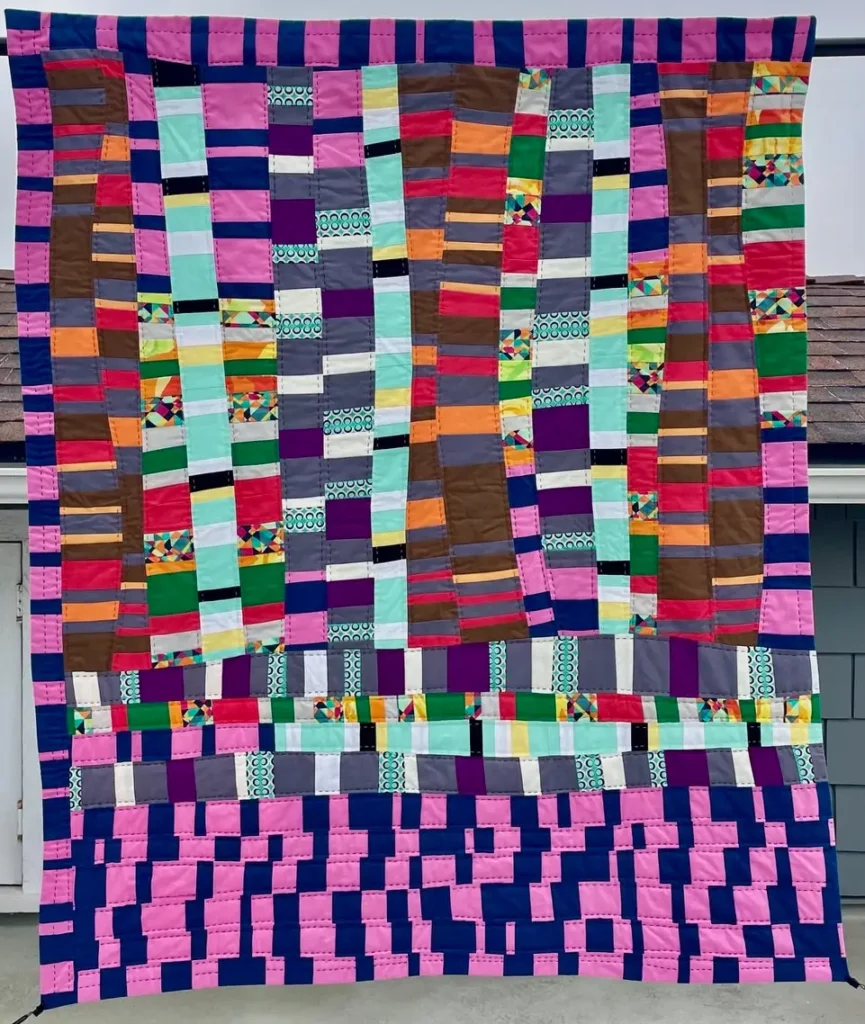
How often do you start a new project? Do you work actively on more than one project at a time?
The real question should be “How often do I not start a new project?”
Fortunately or unfortunately, inspiration can strike at any time. Sometimes, it’s not enough for me to just write down an idea–sometimes I just need to cut into some fabric to see if I can turn that idea into a reality. Because of that, unless I have a looming deadline, I’m always working on more than one project at a time.
I probably have at least five active projects at one time, so that on any given day, I can walk into my sewing room and have at least one project I’m excited to work on. Finally, I’ve been doing a lot of traveling lately, so I always make sure to have an EPP project ready to go at all times.
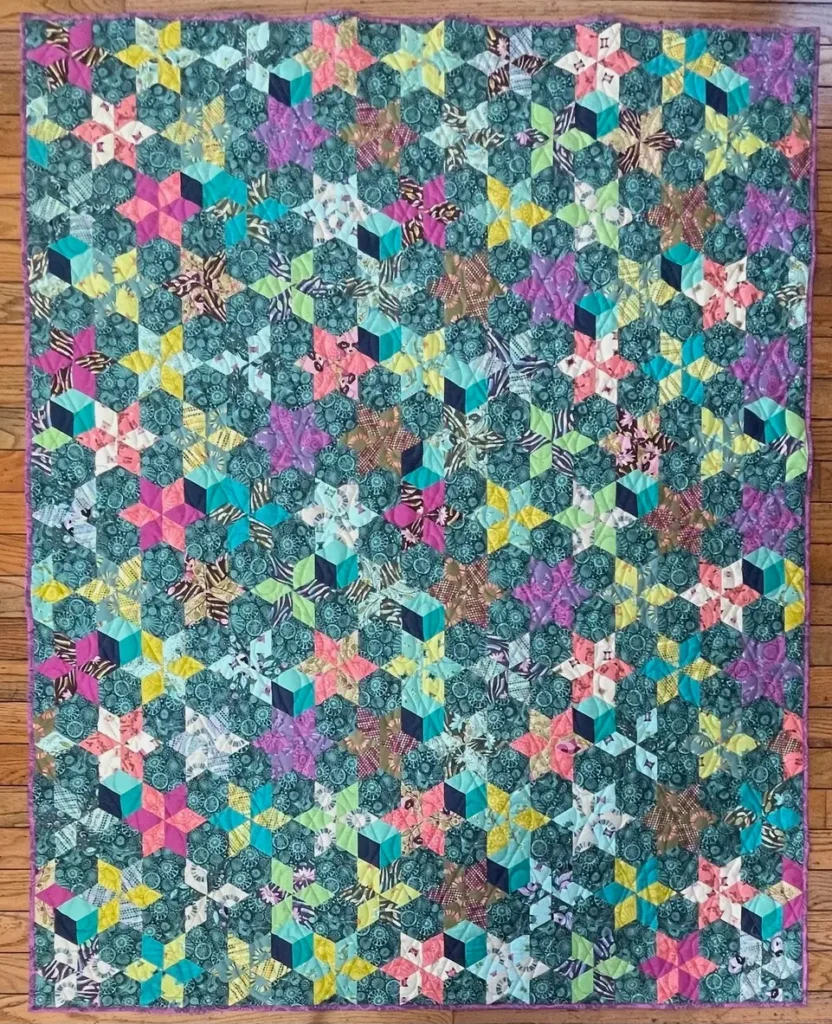
Can you tell us about the inspiration and process of one of your works? How does a new work come about?
Inspiration comes to me in many forms. Often I’m just combining different techniques that I like to do with a color palette that I’m playing with. Most recently, I did something new to me and created templates for an original quilt design for the QuiltCon 2026 Color Challenge. The inspiration for those templates came from a sculpture that I saw at the Museum of Modern Art in New York.
I had taken a photo of the sculpture and then cropped the photo to capture an interesting shape with compelling value contrasts. As luck would have it, five of the colors in the Color Challenge matched the values that I found in my cropped image. So I used a combination of ProCreate to draw the shapes of the templates and Adobe Illustrator to come up with a layout for the blocks. Using those tools made it much easier to make design decisions without first having to sew actual blocks. The result is “Formation,” which I recently submitted for entry into QuiltCon. Fingers crossed!

Which part of the design process is your favorite? Which part is a challenge for you?
Piecing is one of my favorite parts of quilting. I just love running fabric under a machine! But I most enjoy the puzzle of a challenging block construction. There’s almost a sick pride in figuring out how to piece something rather than appliquéing it down.
My biggest challenge is quilting. I haven’t developed the skill set to quilt more complex designs with my domestic machine, and I’m too frugal to invest in a longarm, so I often resort to hand quilting. And don’t get me started on basting my quilts–it feels like a wrestling match practically every time.

Have you ever been working on a piece and thought “On no, what now?” What did you do?
That just happened to me with a piece I started in a workshop. I really enjoyed the premise of the workshop, but I just didn’t like what I had created. So instead of trudging through to complete it, I stopped mid-project and started cutting up the quilt top in progress to make smaller blocks. I’m in the process of arranging those smaller blocks now, and I’m really liking where the quilt is heading.
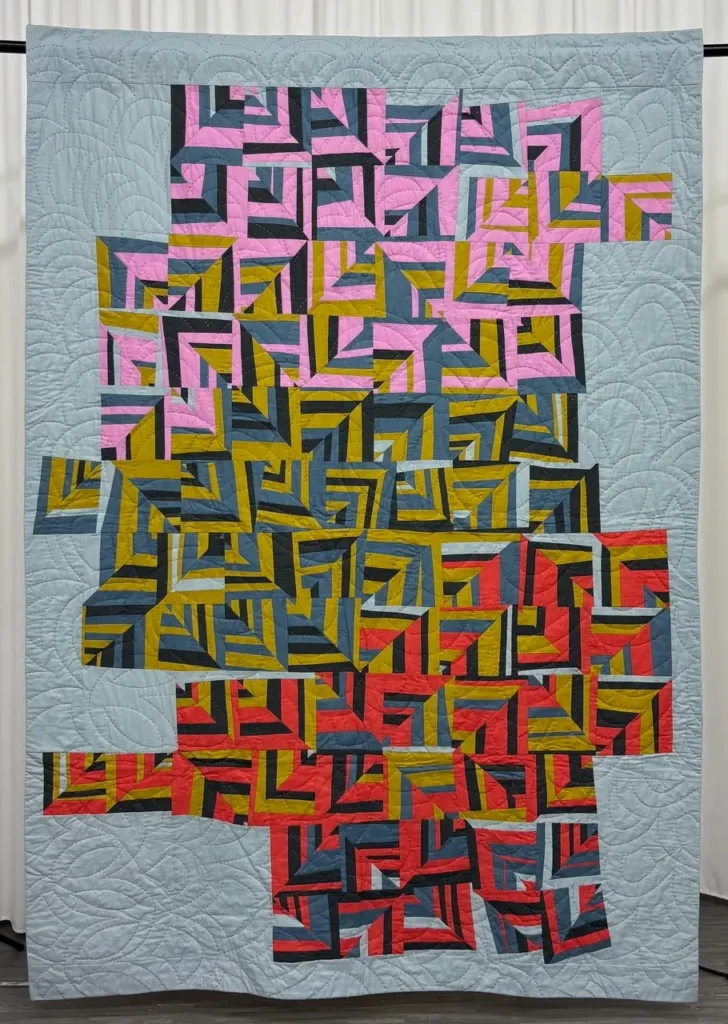
What simple advice would you give to someone just starting quilting?
Take all the workshops that you are able to take.
The one great thing that came out of the COVID lockdown is the opportunity to take workshops online with so many teachers. I’ve really tried to take advantage of this, and I continue to add to my toolbox with every workshop that I take.
Even if you already know how to do a thing, taking a workshop about that same thing with a different instructor will often give you different methods of solving the same problem. And taking a workshop in a technique that may not necessarily be your thing will probably teach you a skill that you’ll be able to put to use in a future project.
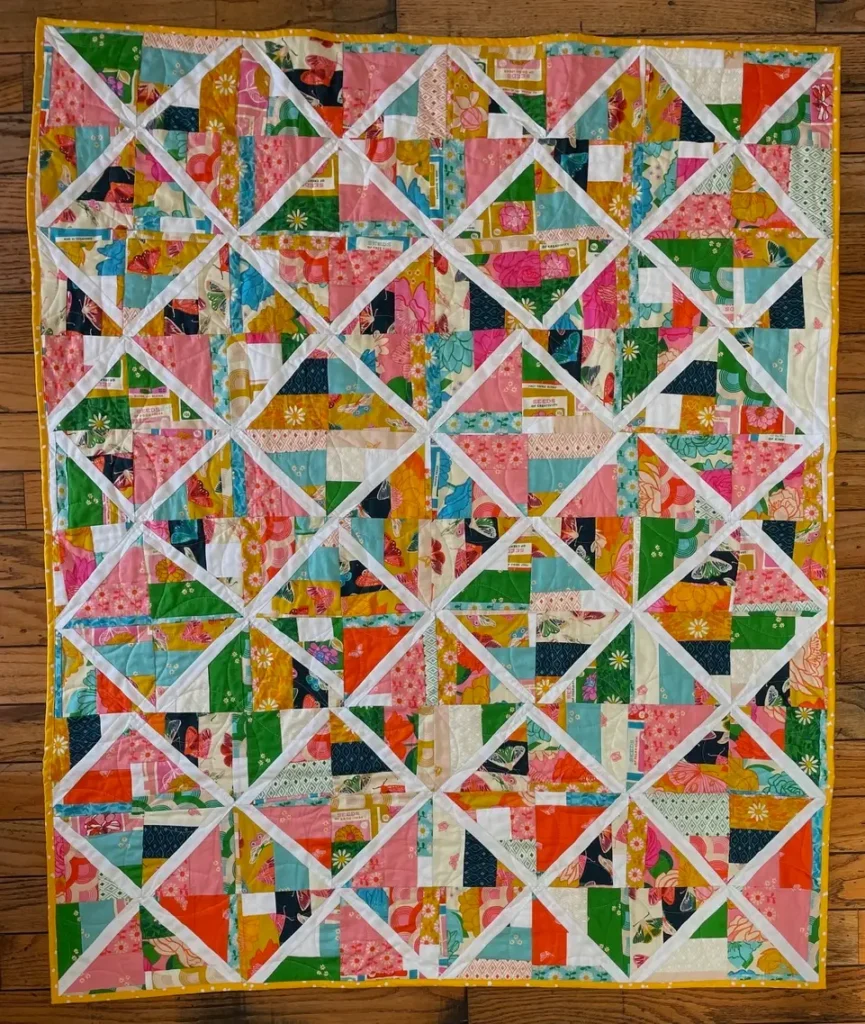
How has your work evolved over the years? Is there a common thread (pun intended!) across the years?
When I started quilting, Jenny Doan was my first online instructor. My kids became very familiar with the intro song and quack to Missouri Star Quilt Co’s YouTube videos because I watched so many of them. The free patterns available from Fat Quarter Shop were also part of my initial repertoire.
I discovered modern quilting during the COVID lockdown and promptly fell in love with improv quilts. A benefit of the pandemic is that so many instructors made their classes and workshops available online. I took full advantage and was able to take online classes with Lynn Koolish, Cindy Grisdela, and Maria Shell as I started my improv journey.
I traveled to an in-person workshop with Sherri Lynn Wood in 2022. Sherri inspired me to find and express my own voice in my quilting. I’m continuing to pursue this type of original work while I take classes with other quilters to expand my technical skills and to learn more about their creative processes.
I’ve certainly evolved more traditional quiltmaking to modern quiltmaking, but I still love a good scrappy quilt. The quilts from Jen Kingwell are some of my favorites to make because they often combine challenging piecing techniques with glorious scrap-busting opportunities.



How did it feel to win Best Hand Quilting at QuiltCon?
I was honestly shocked to win the award, and when it was announced at the QuiltCon awards ceremony, I was kind of confused. I thought that maybe my quilt had gotten moved to the Handwork category, and that I had placed in the category, but then I realized that I had won a top award. I proceeded to stay up all night because I was worried that people were actually going to be able to see the back of my quilt. The thought that they would be able to see the imperfections terrified me.
Where can people see your work?
I recently found out that “Labyrinth,” a part of the Modern Quilts – A Twist on Tradition! 25 special exhibit at the International Quilt Festival will be traveling to St. Louis to be at Quilt! Knit! Stitch! in April 2026. But the easiest place to see my work is @made_by_ecz on Instagram.
Interview posted November 2024
Browse through more modern quilts on Create Whimsy

